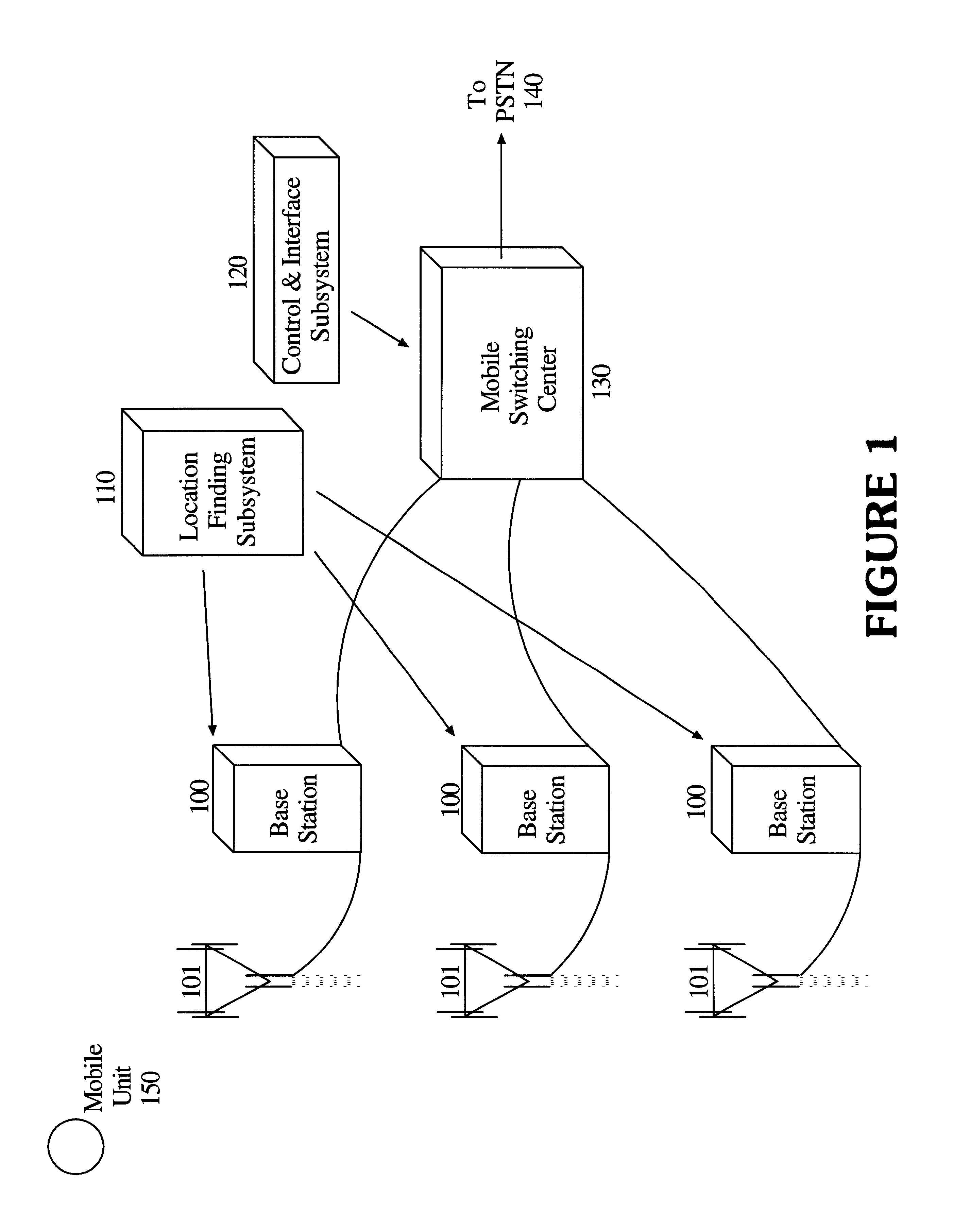System and method for geolocating a wireless mobile unit from a single base station using repeatable ambiguous measurements
a mobile unit and repeatable technology, applied in direction finders using radio waves, instruments, wireless communication, etc., can solve the problems that the current cdma protocol does not allow for the transmission of pilot finger data from the mobile unit to the base station, and none of the prior art systems make use of the wealth of data carried by the signal
- Summary
- Abstract
- Description
- Claims
- Application Information
AI Technical Summary
Benefits of technology
Problems solved by technology
Method used
Image
Examples
Embodiment Construction
With reference to the drawings, like numerals represent like components throughout the several drawings.
With reference now to FIG. 1, a typical mobile communication system is depicted including three base stations 100 each with a group of antennas 101. The base stations are connected to a mobile switching center 130 which is an interface between the mobile communication system and the public switched telephone network (“PSTN”) 140. The present invention may operate in any mobile communication system with any number of base stations and is not limited to a system with three base stations. The antennas transmit to and receive from mobile units, such as the mobile unit 150, wireless communication signals and pilot signals. As used herein, communication signals refer to forward (base station to mobile) and reverse (mobile to base station) signals containing communication information such as voice or data, being transmitted between, for instance, a calling and called party. Pilot signals...
PUM
 Login to View More
Login to View More Abstract
Description
Claims
Application Information
 Login to View More
Login to View More - R&D
- Intellectual Property
- Life Sciences
- Materials
- Tech Scout
- Unparalleled Data Quality
- Higher Quality Content
- 60% Fewer Hallucinations
Browse by: Latest US Patents, China's latest patents, Technical Efficacy Thesaurus, Application Domain, Technology Topic, Popular Technical Reports.
© 2025 PatSnap. All rights reserved.Legal|Privacy policy|Modern Slavery Act Transparency Statement|Sitemap|About US| Contact US: help@patsnap.com



